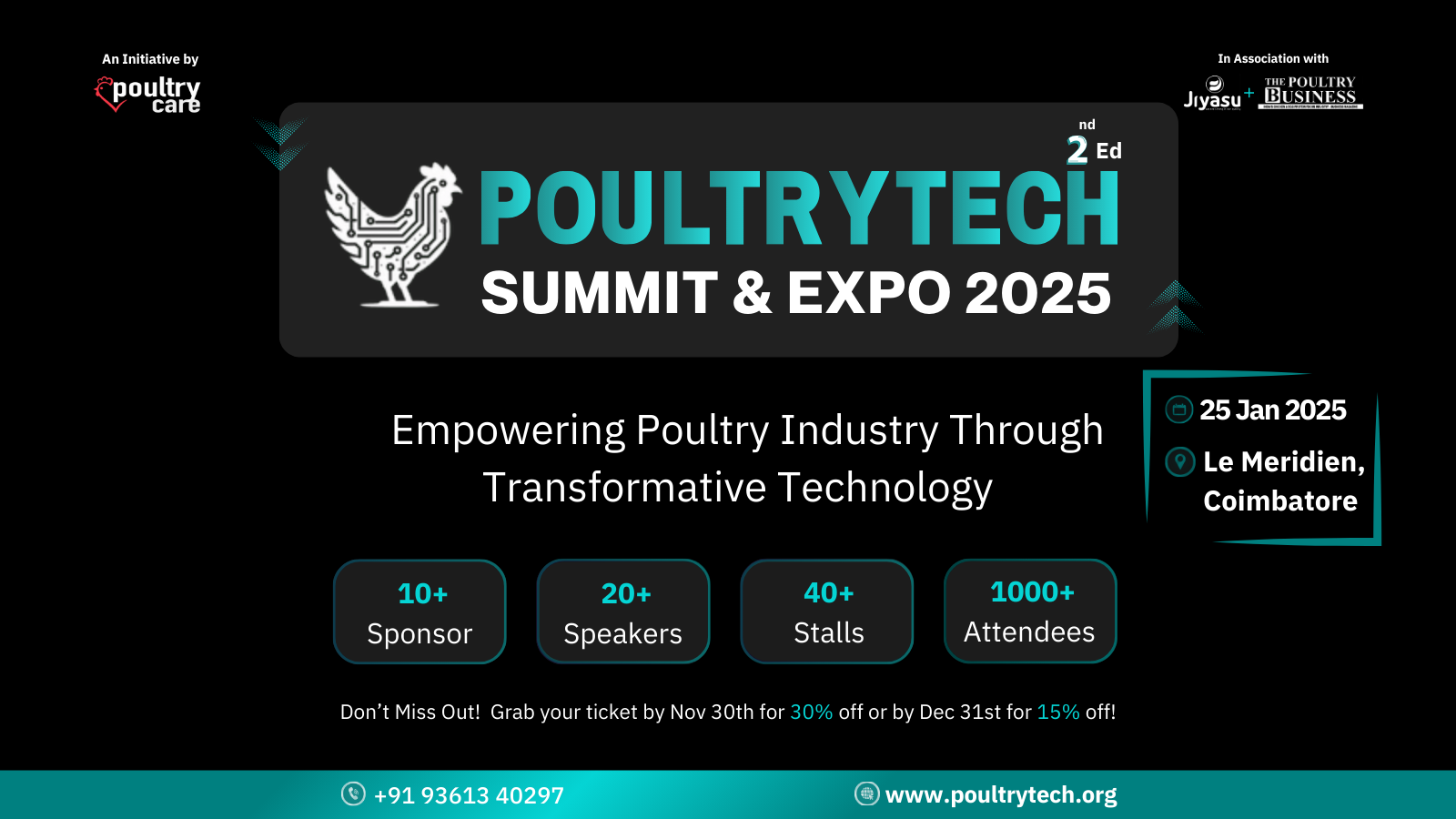As a poultry farmer, you hustle from sunrise to sunset. You check the feed, inspect the sheds, respond to your team, and try to maintain bird health and mortality. You're doing everything right — but still, the profit at the end of the flock feels lower than expected.
Here’s a truth that many farm owners realize too late: You might be losing over ₹1 Lakh per cycle due to one overlooked number — FCR.
Yes, Feed Conversion Ratio (FCR).
It’s the most important, yet most ignored, metric in poultry production.
And if you're not tracking it… you're not managing your real profit margin.
📊 What Is FCR, Really?
FCR = Feed intake / Body weight gained
In simpler words: how much feed does a bird consume to gain one unit of weight?
Lower FCR = Better feed efficiency
Higher FCR = More feed wasted for the same weight
It sounds technical, but here’s the emotional reality:
💸 Bad FCR silently kills your profit.
💸 It’s not just about bird growth — it’s about farm survival.
💸 Every decimal you ignore could cost you thousands — maybe lakhs — across flocks.
💡 Why FCR Goes Unnoticed
Because it doesn't scream.
You don't see it like mortality. You don't hear it like feed shortage.
FCR works silently in the background. You only realize its damage when it's too late — during the settlement, when feed cost feels bloated and income feels tight.
The dangerous part?
Most farmers focus only on:
✅ Feed quality
✅ Bird health
✅ Mortality
But without tracking feed-to-weight conversion, you’re missing the biggest part of the puzzle.
🛠 The Hidden Impact of FCR on Your P&L
Let’s say your birds are consuming more feed than expected but gaining average weight.
You won’t see a problem immediately. But at settlement, here's what happens:
-
Feed cost per bird looks high
-
Weight gain doesn’t justify the feed input
-
Settlement bonus or performance incentive disappears
-
Transport and storage costs spike due to excess feed
-
Net profit drops — without any visible mistake
You think you're doing everything right — but your bank account says otherwise.
And all because the feed-to-weight ratio was silently off.
😱 Real Story: The Farmer Who Lost ₹1 Lakh — Silently
In South India, a contract broiler integrator ran flocks across five sheds.
They maintained:
-
Good feed schedule
-
Decent bird health
-
Proper vaccination
-
Standard mortality
Yet, at the end of the batch, they earned much less than similar farms in their cluster.
Why?
Because their FCR had crept up — just slightly — over the recommended level.
No one noticed it.
The supervisor wasn’t measuring it. The farm manager wasn’t checking it. The feed wastage from overfilling pans and poor feeder adjustment was never logged.
By the time the birds were lifted, they had already lost over ₹1 Lakh in feed cost that could have been saved — just by improving FCR tracking and management.
🔍 What’s Causing Your FCR to Rise?
Some common invisible culprits:
| Cause | Impact |
|---|---|
| Feeder height too low or too high | Birds spill feed or can’t eat efficiently |
| Irregular feeding intervals | Hunger spikes followed by overeating |
| Water leakage or poor quality | Birds consume less feed or fall sick |
| Poor temperature control | Feed intake drops or stress reduces growth |
| Outdated feed stock | Nutritional value lost; birds eat more but gain less |
| Bird overcrowding | Unequal feed access; poor conversion |
These are everyday issues. But when they combine, your FCR goes from silent to destructive.
🧠 The Shift: From Guesswork to Precision
The best broiler farms don’t wait till the end of the cycle to measure performance.
They:
✅ Monitor feed intake daily
✅ Record weight gain weekly
✅ Compare feed per shed
✅ Use software or spreadsheets
✅ Train supervisors to detect early FCR issues
This isn’t about big tech. It’s about knowing what’s happening before it becomes a ₹1 Lakh mistake.
🔄 The Feed-to-Profit Cycle (Infographic Idea)
You can visualize this:
Feed > FCR Tracking > Early Alerts > Adjustments > Optimized Growth > Better Profit > Reinvestment in Farm
Skipping the FCR Tracking step breaks this chain.
🔧 How to Start Tracking FCR Without Stress
You don’t need to hire a consultant or buy expensive gadgets.
Start with:
-
📒 A simple logbook: Feed in vs weight gain
-
📱 Use mobile apps to track trends
-
🧾 Weekly variance reports by shed
-
🚨 Set alerts for feed intake dips or weight stagnation
Even with basic tools, you can reduce feed waste, improve weight gain, and pull your profit graph upward.
🧲 Benefits of Tracking FCR Effectively
Let’s flip the narrative.
Here’s what happens when you master your FCR:
✅ Save feed cost without compromising bird health
✅ Gain better settlement value
✅ Predict and plan feed purchase accurately
✅ Reduce unnecessary transport of leftover feed
✅ Improve team performance through awareness
✅ Create confidence in future expansion and scaling
🎯 Final Thought
Most farmers think profit lies in selling more birds.
But true profit lies in spending less to grow the same bird.
And that starts with knowing how much feed is really needed to achieve your target weight.
FCR is not just a number. It’s your margin’s heartbeat.
Don’t let it go untracked.



